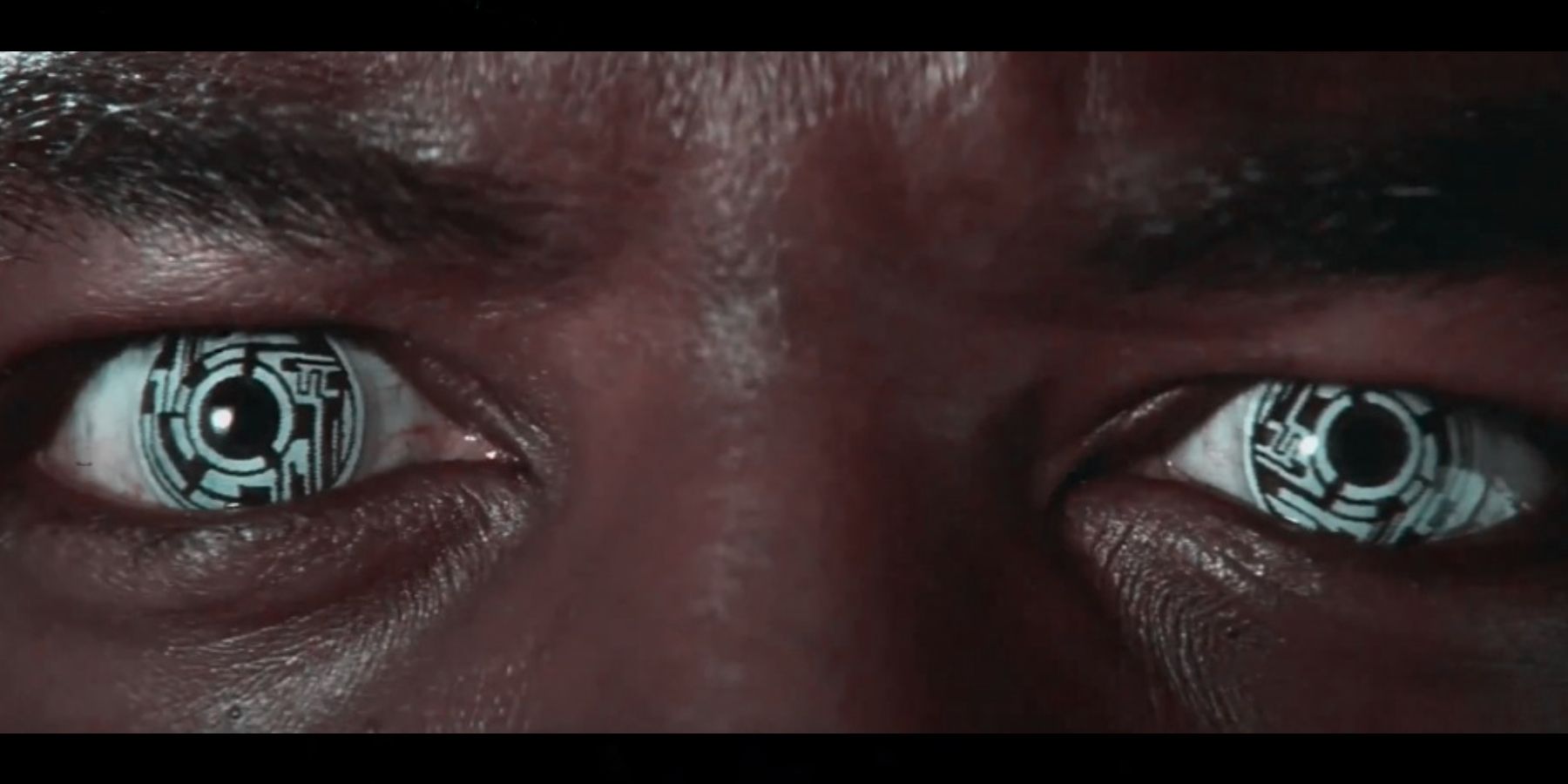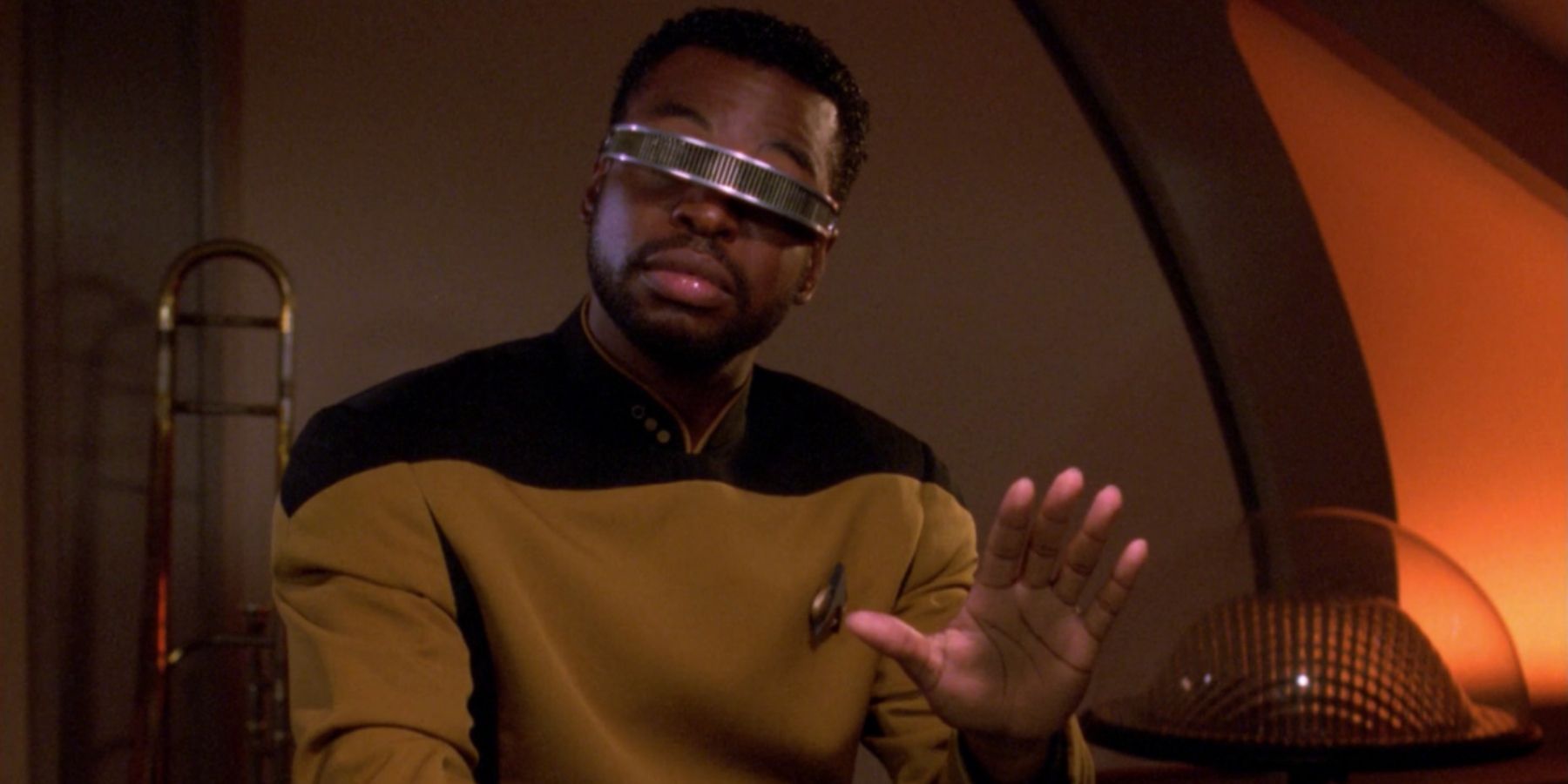Over the years, Star Trek has become known for creating some of science fiction's greatest technologies. These marvels range from from teleportation devices that can send a person huge distances in a matter of seconds, to simple yet revolutionary gizmos that can instantly translate any known (and often unknown) alien language. The world is rich with these creations, but they often lie outside the human body. There are of course a few exceptions, but the franchise seems to avoid common use of cybernetics in both humans and the wide array of alien species. Why is that?
Cybernetic augmentation is the implantation of electronic machinery into the human body to either enhance or sometimes restore functionality. Often within the world of science fiction, it is used to improve performance. The idea is largely fictional; however, it can be argued that the use of prosthetic limbs or computer/brain interfaces for those with communication struggles could be classified as modern-day cybernetic augmentations. These body modifications are often highly fictionalized, shown in Cyberpunk-style figures who blur the line between machine and organic. They are often seen in science fiction that conquers a plethora of philosophical questions surrounding identity.
These augmentations are found within Star Trek, but they are not heralded as desirable. When looking at what they are capable of, this is a strange choice. In the Next Generation episode “Measure of a Man,” it's revealed that the disability icon Geordi LaForge’s visor and corresponding implants give him far superior vision, allowing him to see things that nobody else can. The episode throws this information at audiences, but it never truly delves deep into why, if this cybernetic augmentation is so good, everybody doesn’t sport one?
It suggests that the people of the Star Trek world, whether they be Federation or Vulcan adjacent Romulan, Ferengi or even Dominion, do not want these replacements for anything other than fixing ‘broken’ parts of themselves. These augmentations are not outlawed like genetic augmentations, which were banned after the events of the Eugenics Wars. So what is stopping more people from getting them? What line has been drawn to say these modifications are not desirable?
One of the biggest answers to this question is, once again, found outside the fictional universe. Firstly, it isn't feasible to just give these cybernetic augmentations to each and every human actor. Especially in the early days of visual effects, it would have looked ridiculous and cost a fortune. The show's creators also wanted these stars to be relatable, to feel like they are just like any other human being, and thus just like the audiences watching.
A big part of what Star Trek was trying, and still tries, to preach is that the future of humanity is a good one, that humans can evolve and change to become better. This is etched into everything the franchise has done since the good old days of the often underrated Original Series. It presents humanity as a force for good across the universe, one that is tolerant and kind, moral and caring. They are trying to say that this is possible for humans as we know them today. To show them cybernetically improving themselves distorts this message, perpetuating the idea that humans on their own are not good enough, so they need to be altered and improved. It’s no longer a mindset change between the humans of the future and the humans of today. It’s instead reengineering our bodies into something better, cheating the system without putting in the effort. It goes against the very founding fundamentals of Star Trek, that humanity is inherently flawed and needs to be ‘fixed.’
There is an in-universe explanation too; however, the show doesn’t specifically spell it out, and it applies more to humans than other more nefarious races. The humans of the future are shown to be better than the usual vices that plague humanity of today. They have moved past the use of money and wars for gain, and a big part of this lies in the absolute shift away from greed.
In a lot of science fiction, these cybernetic augmentations are desires born from greed, the need to constantly improve a body to be better than everyone else, wanting more and more than what their natural body could provide. These future humans find their worth through the journey, a sentiment that may sound corny but is true of Roddenberry’s vision. They do not want to cheat their way to become better. Rather, their sense of self-worth comes through the hard work along the way. Cybernetic augmentations, no matter how much they may improve normal bodily functions and abilities, are nothing compared to the bodies they were given at birth, and all the hard work they have put into improving themselves physically and mentally.






